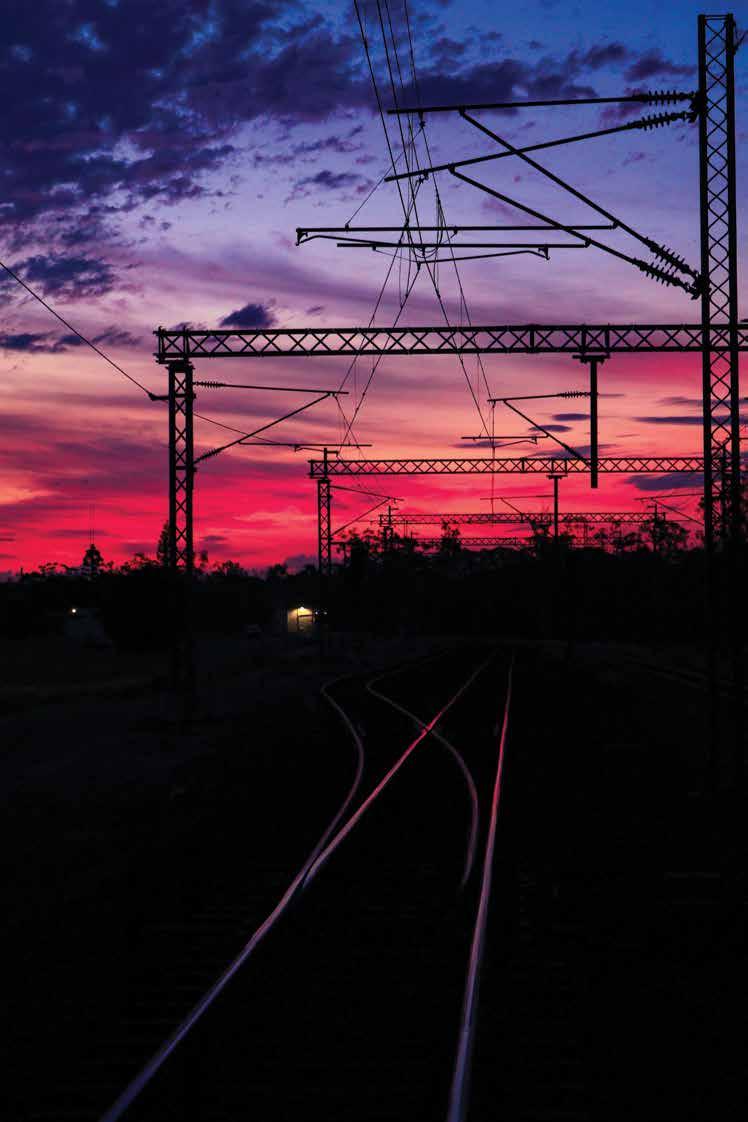
5 minute read
Message from the ARA
from REX Aug 2019
by Prime Group
ARA CEO Danny Broad.
NZ Rail a hit, National Transport Reforms and more from ARA
In his monthly column, Australasian Railway Association CEO Danny Broad discusses current activities of the ARA.
AS A TIMELY REMINDER OF WHY WE are the Australasian Railway Association, over 250 delegates from New Zealand and Australia met in Auckland in June for the two–day 2019 New Zealand Rail Conference.
New Zealand Government Ministers The Hon Phil Twyford and The Hon Shane Jones outlined the Government’s commitment to restore rail to a key role in transport planning and economic development, with a $1b funding boost in the 2019 Budget. The funding was earmarked to renew a range of rail services after many years of underfunding of rail.
It was refreshing to hear such clear and unambiguous support for the rail sector Government Ministers.
Senior officials from The Ministry of Transport and KiwiRail then foreshadowed a 10- year rail plan that will be launched later this year. The conference discussed the critical role rail plays in supporting New Zealand’s key industries: dairy and forestry, its contribution to realising New Zealand’s zero-emissions target by 2050 and heard updates on significant rail projects- Auckland Metro, Auckland Light Rail and Northland. A great sign for the future of the industry was the strong rollup of about 120 Young Rail Professionals and potential employees at a forum the night before the Conference.
The Conference showed the many similarities between our industries in both countries.
Submission on National Transport Reforms Following considerable member engagement, including meetings in four states, the ARA finalised its submission to the Productivity Commissions’ Inquiry on National Transport Regulatory Reform. The submission notes that while national transport reforms have led to some improvements in the rail regulatory regime, much more needs to be done to achieve the full benefits of reform.
Jurisdictional differences continue to thwart the achievement of the full benefits of national reform. In some states, prescriptive regulations increase compliance costs with no proven safety benefit. Deloitte modelling confirms that NSW and Queensland state-based rules that limit train driver working hours are at odds with the rest of the country. They create significant productivity losses and add unnecessary red tape, with no identified increase in safety.
The NSW-specific drug and alcohol requirements also add compliance costs, and negatively affect productivity by limiting an operator’s flexibility to manage drug and alcoholrisks. These productivity losses impact the rail freight sector’s ability to compete with heavy vehicles that have much greater flexibility in the hours they can drive, and less stringent drug and alcohol testing requirements. This inhibits our sector’s ability to compete on a level playing field.
The Productivity Commission can play an important role in identifying how differences can best be resolved.
For the full benefits of the Rail Safety National Law to be achieved, governments must give renewed emphasis to national consistency of approach, through structural reform to devolve appropriate power to the national regulator to enable the regulator to focus its effort on key risks.
Rail Accessibility Forum The ARA’s Accessibility Working Group (AWG) coordinates the industry’s activities in relation to disability access in rail.
Australian passenger rail operators take a holistic approach to improve accessibility, supporting investments with an array of programs. Each operator employs staff dedicated
to improving the accessibility of their networks. These teams are committed to continuous improvement, advise their organisations and colleagues on accessibility, roll-out a variety of accessibility-minded programs and consult with the disability sector to ensure improvement programs are developed in collaboration with those with a disability and their representative organisations. To improve awareness of rail initiatives and to establish dialogue, ARA is holding an inaugural Accessibility Forum in Melbourne on 13 August. The event aims to bring together people with disability and their representative organisations; the Commonwealth, State and Territory Government representatives; the rail industry and other key stakeholders to discuss the journey Australian train and tram networks are on to improve the accessibility of their networks. The theme for this Forum is “A journey together to accessible rail in Australia”.
The ARA and members of the AWG are involved in the modernisation of the Disability Standards for Accessible Public Transport (DSAPT).
The industry believes the objective of modernising the DSAPT should be to focus on the outcome sought; enabling people with disability to travel by public transport, rather than prescriptive standards which can hinder innovation.
Heavy and light rail, buses, and ferries each have very different operating requirements and therefore their abilities to physically comply with standards differ. Establishing mode-specific elements within the DSAPT would be a practical solution to address and reflect the different operating environments of different modes of
public transport and will assist in making the requirements more applicable.
In agreeing to modernise the DSAPT, the Commonwealth Government agreed to ‘include research on the technical issues’. As this work was yet to occur in rail and to constructively contribute to this critical project, the ARA engaged the Institute of Railway Technology at Monash University to conduct a desk-top engineeringbased review of the DSAPT. The overarching recommendation of that review to move to an outcomes-based standard that allows greater innovation and flexibility.
SmartRail On 7th August, ARA will hold the first meeting of the Smart Rail Executive Steering Committee. The Smart Rail report, released earlier this year, captures a long-term vision to support and integrate digital and telecommunications technologies in the Australasian rail environment. The Committee has been established to oversee industry’s implementation of initiatives, actions and projects proposed under the Smart Rail Rout Map and to provide a forum for ARA members to collaborate to better adopt and keep pace with digital and telecommunication technologies.
The Committee provides strong industry leadership to encourage widespread industry buy-in of the Smart Rail Route Map’s actions and initiatives, and will act as a senior decisionmaking body with respect to the direction of the Smart Rail Route Map to support its successful implementation across the Australian rail industry. More than 250 delegates attended the NZ Rail Conference in Auckland.


The world is moving. We are moving.











